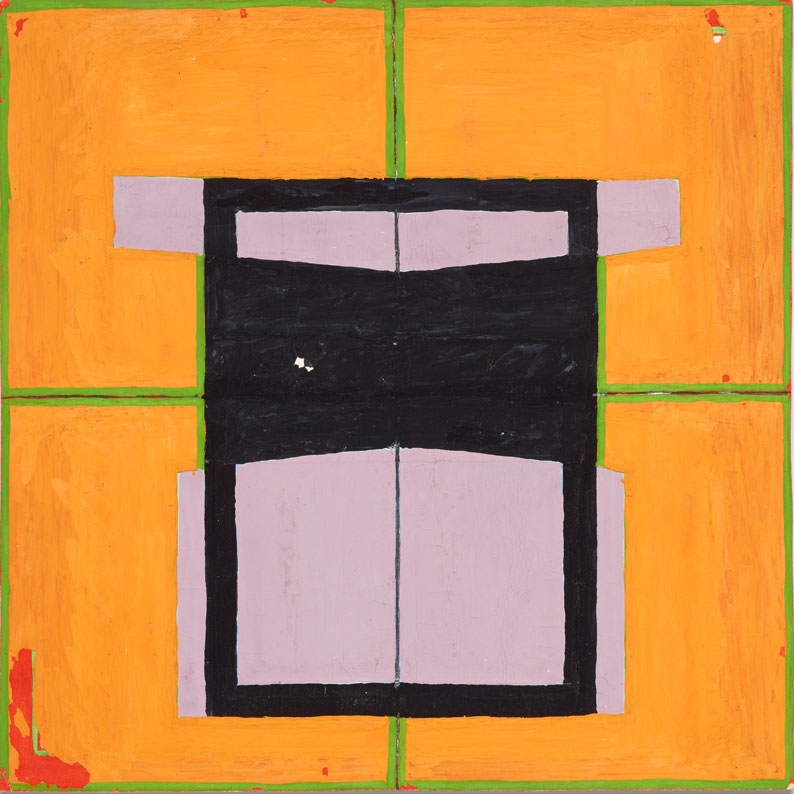This is an exceptionally sharp survey exhibition. Anchored by approximately 100 of Jo Baer’s works on paper from the early to mid-1960s (mainly small gouaches that were produced as possible prototypes for paintings), it succeeds in constructing a compelling argument against seeing her trajectory merely as split between an early minimalist phase and, from the mid-1970s, a figurative one. Brought together like never before (and in her first institutional show in Germany), the Amsterdam-based American artist’s works from various periods are given more than ample opportunity to re-present their connectedness despite their distinctions.
In some cases, the bond is straightforward. For example, in the midst of the small, predominately geometric gouaches, one in particular, Untitled (1960), contains a silhouetted and linear black image of a reclining female figure in the upper half of its white square, prefiguring (literally) the white shape of an ‘absent’ figure in a large linear painting called ’Tis Ill Pudling in the Cocatrice Den (La-Bas) constellation1 (1987), and suggesting that the ‘radical figuration’ that Baer named for herself during the mid-1970s – at the point when she moved from New York to Ireland – began some time before, maybe even in the most geometric of the earliest gouaches and paintings that refer, in particular, to architectural detailing. Of course the titles of the two works mentioned above maintain a distance from each other, but that fact seems here to speak more of the different times in which each was produced than to the pictorial decisions Baer made in each instance.
Then again, this exhibition provides compelling evidence that Baer has made productive use of the gaps in verbal and pictorial language all along, by way of her clear and ongoing interest in signs and symbols – even within some of her specific series. I’ve had the privilege of seeing, in various places, several of her best-known ‘frame’ paintings from the late 1960s (white monochromes with black and/or coloured borders) as well as her idiosyncratic ‘radiator’ paintings from the early 1970s (so called because of their almost-on-the-floor wall placement and boxlike shapes), but never before have I focused as much on the connections between what they are and what they are capable of representing, not to mention how they are made. A radiator painting like V. Eutopicus (1973), titled after the Latin naming of plants, reinforces its organic ‘nature’ via the painted shapes that continue around its sides, similar to some of the earlier and more formal frame paintings that Baer has classified (rather than titled) as ‘Wraparounds’.
That initial bolstering is reiterated in the most recent paintings included here, especially Testament of the Powers That Be (Where Trees Turn to Sand, Residual Colours Stain the Lands) (2001), in which a mashup of natural and architectural imagery is framed by bands of colour along its vertical edges. With reinforcement upon reinforcement again and again, then, this exhibition provides a powerful type of mise en abyme for a deeper understanding of a deserving artist’s total endeavour by circumscribing it brilliantly.
This article was first published in the December 2013 issue.
